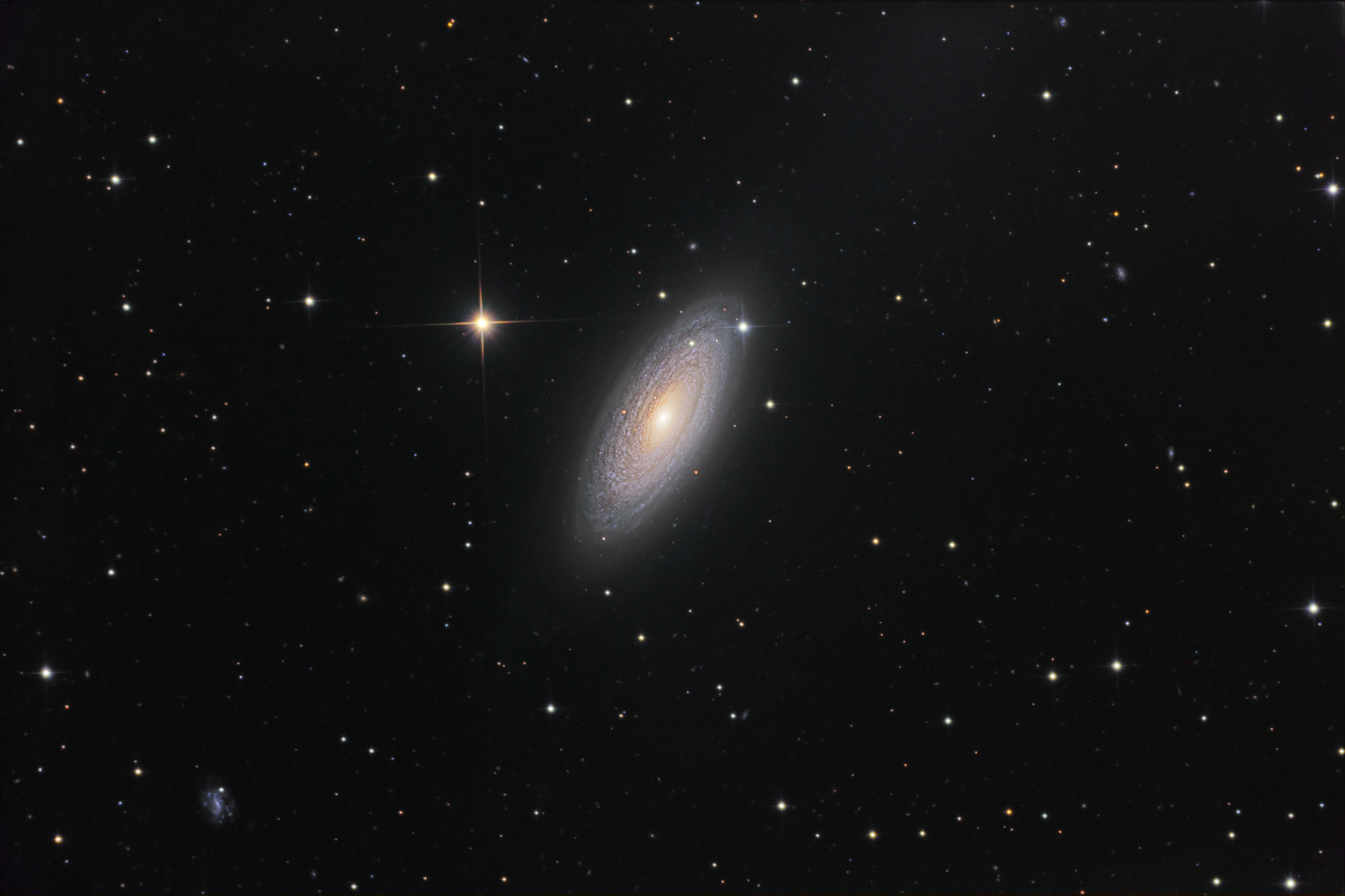JohnD wrote:
Is the central region as empty of stars or dust as it looks?
Yes, I'd say it almost certainly is. Very many spiral galaxies really look like this - there is a yellow bulge apparently completely devoid of dust, and then, quite suddenly, the starforming dust appears. This is particularly common in flocculent galaxies, that is, starforming galaxies with dust but no clear spiral pattern. A particularly striking example is galaxy NGC 2775:
This looks like a Hubble color photo where the color is horribly shifted to the blue. You can be sure that the bulge of NGC 2775 is yellow, not blue, as it appears to be here. Nevertheless, the lack of dust in the bulge and the very dusty structures outside the bulge are very obvious here. Note, too, the suddenness of the transition.
And the central glow - is that a dense ball of stars? Or what? Can we guess at a BH in there?
The bulge is full of old yellow stars. There is no star formation here, because stars need gas and dust to form, and there is none of that in the bulge. Closer to the center there is often dust and some quite intense star formation, but there is probably not a lot of central star formation in either NGC 2841 or in NGC 2775. There may be no central star formation in these galaxies at all.
The very center of a galaxy is always very densely packed with stars, at least the centers of all massive galaxies. And NGC 2841 is massive, so we can be sure that its center is densely packed. How dense is it? Well, at least it will be denser than a globular cluster:
http://apod.nasa.gov/apod/ap070419.html
Omega Centauri is dense, but the center of a large galaxy is considerably denser.
And is there a black hole in there? Not in Omega Centauri, but in NGC 2841, yes, definitely. All large galaxies have a central black hole, and NGC 2841 is large and massive. Since this galaxy is larger and more massive than the Milky Way, chances are that, if anything, the central black hole of NGC 2841 is bigger than the one in the Milky Way. So it will probably weigh more than four million solar masses, which is the mass of the black hole in our own galaxy.
No, almost certainly not, at least not in my opinion. Neufer might disagree. The way I see it, there is no "gap" between the yellow bulge and the dusty star forming region in NGC 2841.
This is a pole-on view of another flocculent galaxy, NGC 7217:
http://www.caelumobservatory.com/mlsc/n7217ms.jpg
As you can see, NGC 7217 has a large yellow bulge, but interestingly, the bulge has a complex dusty spiral pattern that penetrates almost, but not quite, all the way to the center of the galaxy. This dusty flocculent spiral pattern in the bulge displays some star formation. Outside this yellow bulge with its dusty spiral pattern is a blue starforming ring. Importantly, however, there is no gap between any of the components of this galaxy.
Ann
 Spiral Galaxy NGC 2841 Close Up
Spiral Galaxy NGC 2841 Close Up


